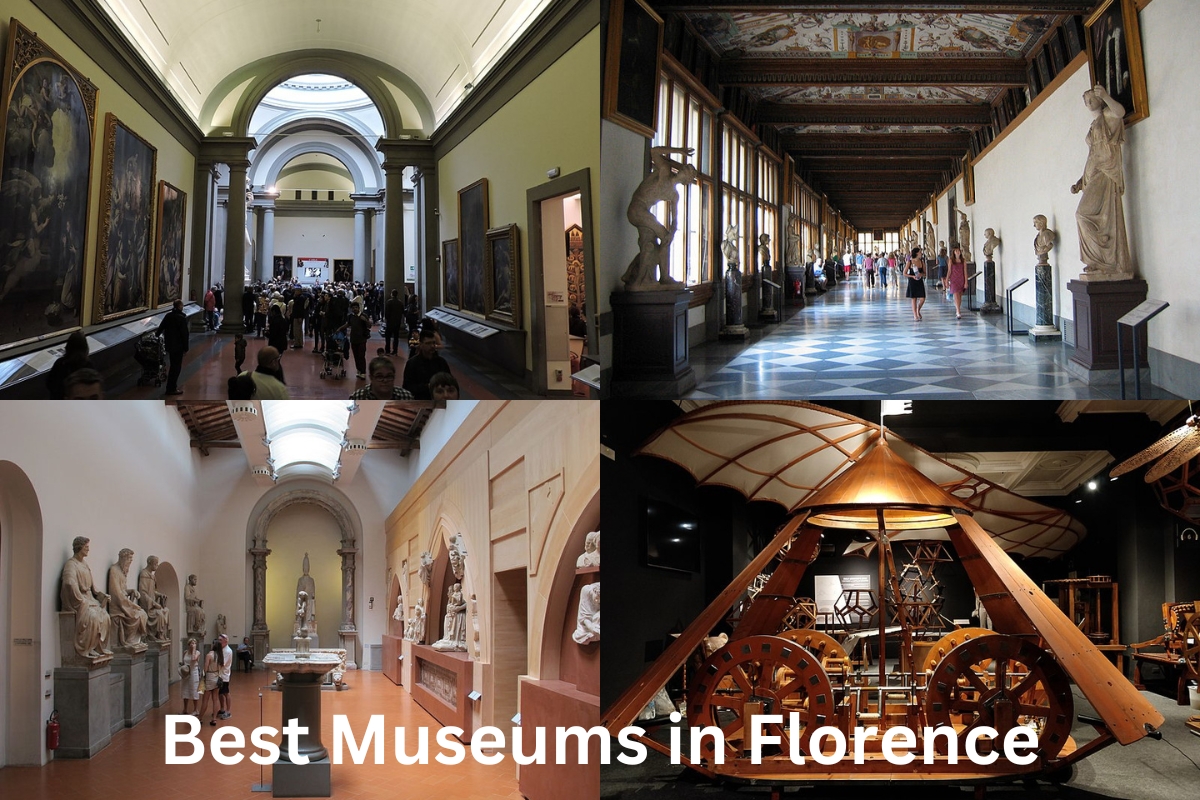The city of Florence, Italy, is a cultural and historical treasure trove. Since its founding by the Romans in 59 BC, many notable figures in Italian history have called this city home.
Florence is well-known for its culinary delights as well as its beautiful buildings and artwork. In addition to being home to world-renowned artists like Michelangelo, Botticelli, and Leonardo da Vinci, the city also boasts a long list of other great creatives.
The regional capital of Tuscany, is located roughly in the geographic center of Italy.
Due to its importance as a trading and financial center in Medieval Europe, Florence was one of the wealthiest cities in the continent.
Because of its significance as an artistic, cultural, commercial, political, economic, and financial center, it is generally agreed upon among scholars that Florence was the birthplace of the Renaissance.
In this era, Florence rose to become a major power in Italy, Europe, and beyond.
Travelers flock there now to stroll its beautiful streets and marvel at some of the world’s best Renaissance art.
Best Museums in Florence
1. Uffizi Gallery
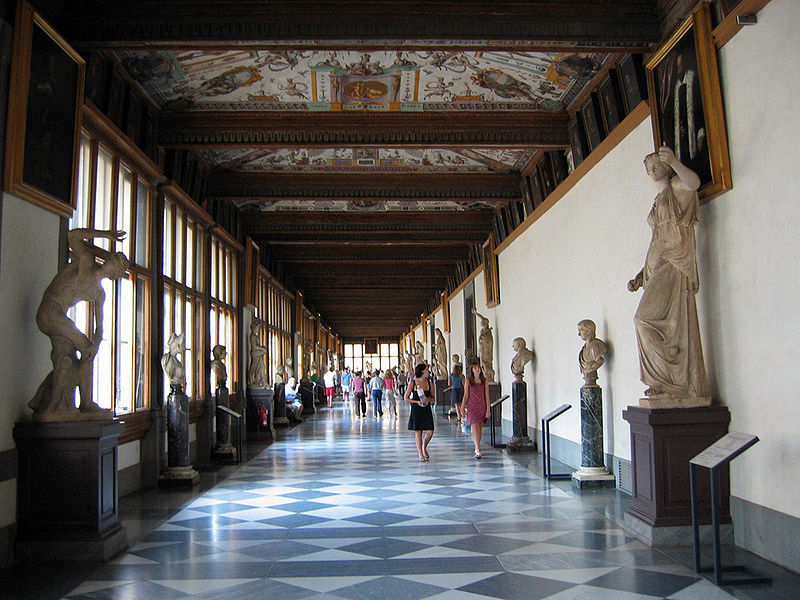
The Uffizi Gallery is a world-famous art museum that is located in the Historic Center of Florence, adjacent to the Piazza della Signoria.
Not only is it one of the most well-known and famous museums in the entire globe, but it is also one of the largest and most important museums in all of Italy.
It is home to a collection of works that are considered to be of incalculable value, the majority of which were produced during the Renaissance era in the history of Italy.
In accordance with the well-known Patto di famiglia, which was negotiated by Anna Maria Luisa, the last Medici heiress, the art collections of the ruling House of Medici were bequeathed to the city of Florence once the House of Medici had passed away. Anna Maria Luisa was the last member of the Medici family to inherit the family fortune.
It is considered to be one of the first instances of a contemporary museum. In order for patrons of the gallery to view the displays, they have been required to schedule an appointment ever since the sixteenth century.
The gallery was first made available to the general public in the year 1765, and it was given the status of museum in the next century.
2. Galleria dell’Accademia
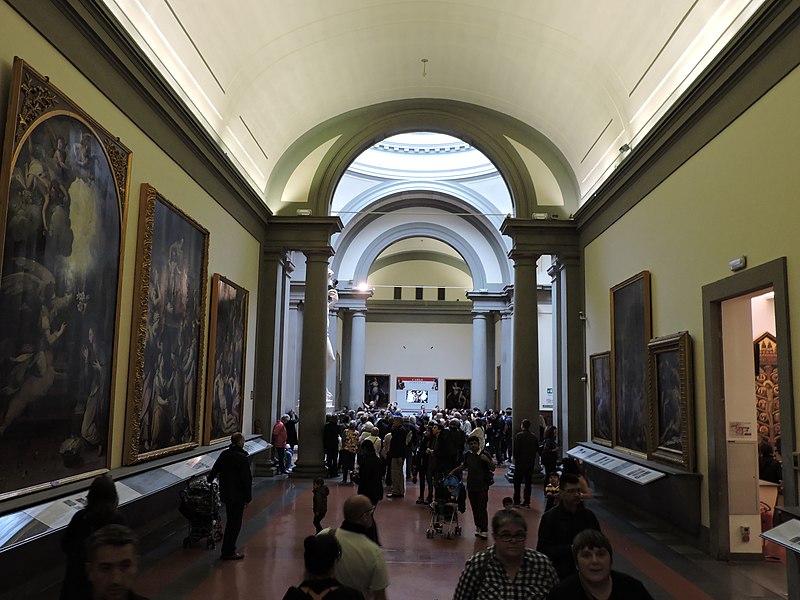
The Academy of Florence maintains an art museum known as the Galleria dell’Accademia di Firenze. The statue of David by Michelangelo is housed inside, for which the building is most famous.
It also features a great number of paintings by Florentine artists, primarily from the 1300s to the 1600s, and a number of additional sculptures by Michelangelo (the Trecento to the Late Renaissance).
Compared to the Uffizi, the primary art museum in Florence, this one is much smaller and more focused. It shares a wall with Florence’s Accademia di Belle Arti, or Academy of Fine Arts, but has no affiliation with the institution despite sharing a name.
The Uffizi Gallery in Florence is the most popular Italian art museum, but this one attracts almost as many visitors each year.
3. Bargello National Museum
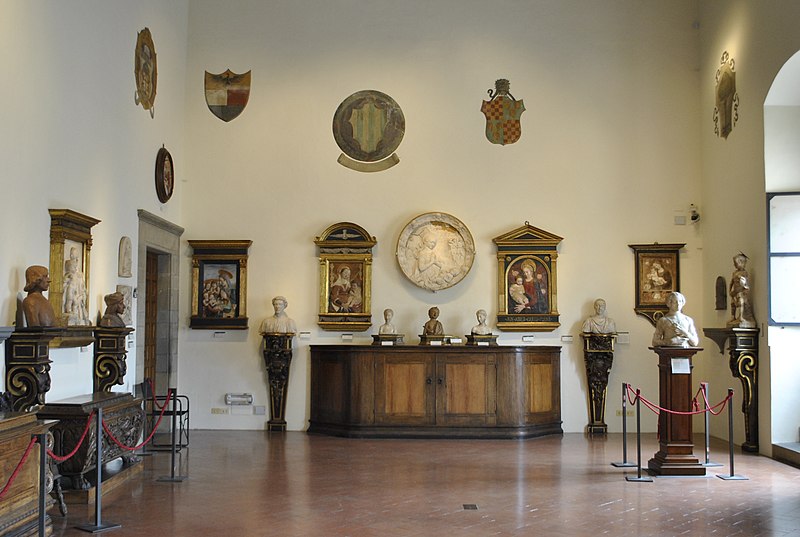
Originally a prison and barracks, the Bargello in Florence, Italy is now an art museum with several names. These include Palazzo del Bargello, Museo Nazionale del Bargello, and Palazzo del Popolo (Palace of the People).
The museum features works of art by Michelangelo, including his famous Bacchus, Pitti Tondo (or Madonna and Child), Brutus, and David-Apollo.
Included in its collection are works by such artists as Donatello (whose works include the David and the Tabernacle of St. George), Vincenzo Gemito (whose works include the “fisherboy”), Jacopo Sansovino (whose works include Bacchus and Architecture), Giambologna (whose works include Architecture and Mercury), and the Della Robbia family (whose works include many works by both of these artists).
Benjamin Vinci Cellini’s bronze bust of Cosimo I. A few pieces from the Baroque era survive, most notably the Bust of Costanza Bonarelli by Gianlorenzo Bernini, completed in 1636 or 1637.
The museum also houses a remarkable assortment of textiles, tapestries, ivory, silver, armor, and coins, in addition to its impressive collection of maiolica ceramics. The museum now has the right side panel of the Franks Casket, which was previously lost.
In addition, it showcases Lorenzo Ghiberti and Filippo Brunellesch’s rival ideas for the second set of doors at the Florence Baptistery, which depict the biblical story of Isaac’s sacrifice (1401).
4. Palazzo Vecchio
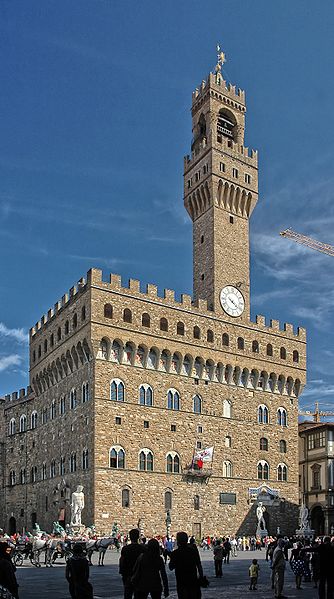
City hall in Florence, Italy is housed at the Palazzo Vecchio. It looks out over the Piazza della Signoria, where you can find a replica of Michelangelo’s David, as well as the Loggia dei Lanzi, where you may view a gallery of statues.
While it was first known as the Palazzo della Signoria, after the Signoria of Florence, the governing body of the Republic of Florence, it has also been known as the Palazzo del Popolo, the Palazzo dei Priori, and the Palazzo Ducale over the course of its lengthy history.
When the Medici duke relocated his court across the Arno River to the Palazzo Pitti, the edifice was given its current name.
Between the years 1865 and 1871, when Florence served as the interim capital of the Kingdom of Italy, the palace earned prominence as the headquarters of the provisional administration of a unified Italy.
Even though the majority of the Palazzo Vecchio is now a museum, it continues to serve as the emblem and center of local government in Florence, housing the mayor’s office and the City Council since 1872. The oldest of the tower’s three bells dates back to the 13th century when it was cast.
When it was finished in 1504, Michelangelo’s David greeted visitors at the entrance until 1873, when it was transferred to the Accademia Gallery. Sculptures of Hercules and Cacus by Baccio Bandinelli currently flank a copy that was built in 1910.
5. Pitti Palace
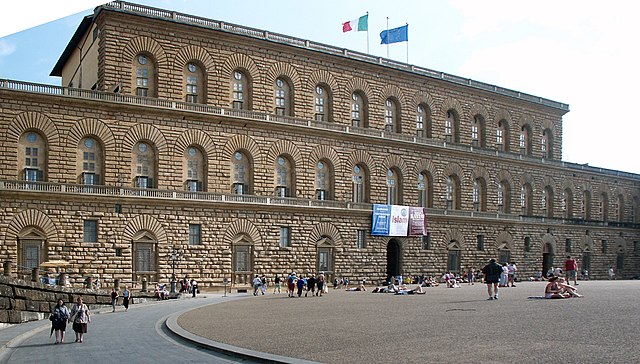
There is a great ducal palace in Florence called Pitti Palace. The construction of the palace for the powerful Medici family began in 1458 and continued until 1569. Positioned on the other bank of the river from the historic Ponte Vecchio on the south bank of the Arno (Old Bridge).
Pitti Palace was built by Cosimo de’ Medici, the first duke of Florence, to serve as his personal house. It eventually became the official palace of the Grand Dukes of Tuscany.
Among Florence’s many museums, Pitti Palace is the largest. The Museo degli Argenti, a museum dedicated to fashion, is located there, together with the Palatine Gallery and the Modern Art Gallery.
Its Boboli Gardens, one of Italy’s most renowned public parks, may be found directly behind the palace.
6. Museo dell’Opera del Duomo
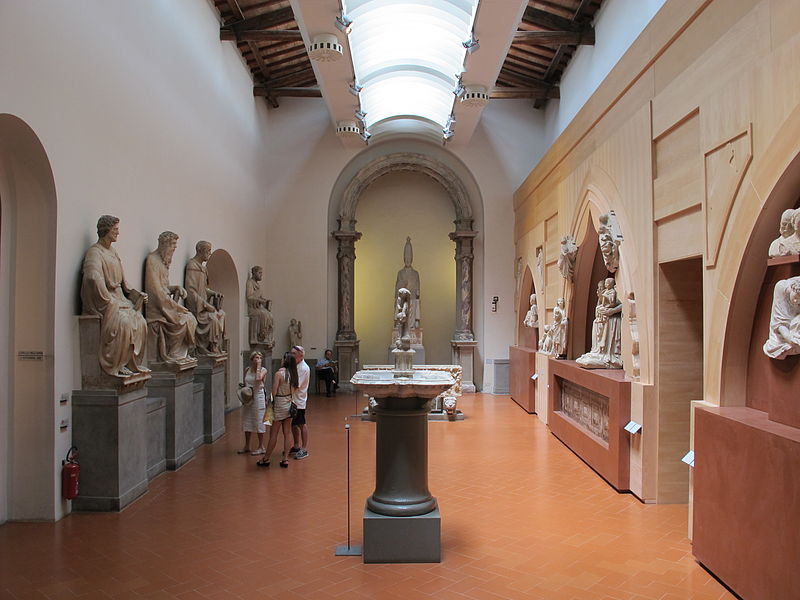
Many of the original works of art commissioned for the Cattedrale di Santa Maria del Fiore, the cathedral (Duomo) of Florence, can be found in the Museo dell’Opera del Duomo (Museum of the Works of the Cathedral) in Florence, Italy.
A short walk east of the Duomo’s apse will bring you to the museum. It first opened to the public in 1891 and currently displays what is often considered to be the finest collection of sculpture in the world.
The museum’s collection includes works such as Donatello’s Penitent Magdalene and Luca della Robbia’s cantorias (singing galleries) for the cathedral’s Baptistery.
The Deposition, a pietà sculpted by Michelangelo and meant for his own tomb, is also part of the collection.
On August 6, 2013, it was claimed that a tourist had accidently snapped off a finger from a statue of the Virgin Mary by Giovanni d’Ambrogio, which dated back to the 14th century. However, the finger was really a subsequent restoration and was not part of the original piece.
7. Palazzo Strozzi
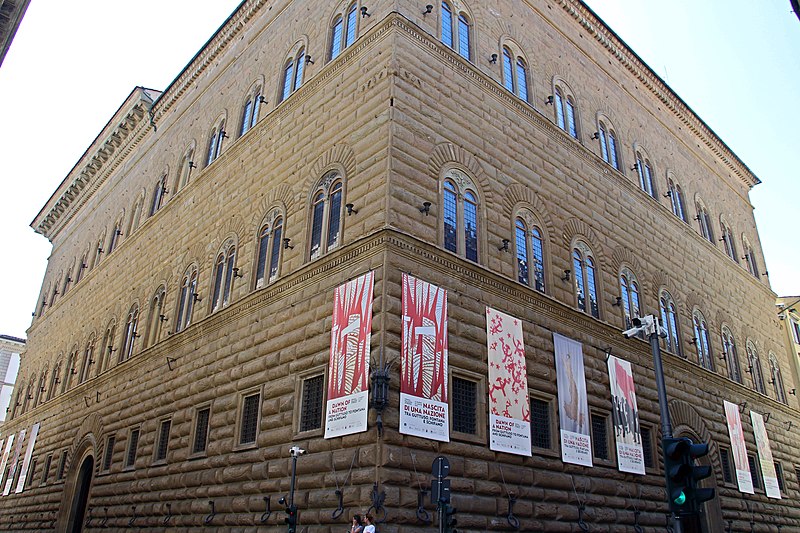
Until 1937, the palazzo served as the primary residence of the Strozzi clan. When the Istituto Nazionale delle Assicurazioni moved into Palazzo Strozzi, they performed extensive renovations to the edifice.
The building was donated to the Italian government by the Istituto Nazionale delle Assicurazioni in 1999, and it now houses the Institute of Humanist Studies and the Fondazione Palazzo Strozzi.
Since 1940, the building has also been home to the Gabinetto G.P. Viesseux and the Renaissance Studies Institute.
The palace is presently utilized for cultural and artistic events, fashion shows, and international expositions such as the now-annual antique show, launched as the Biennale dell’Antiquariato in 1959 “The artist Cézanne in the Italian city of Florence.
8. Stibbert Museum
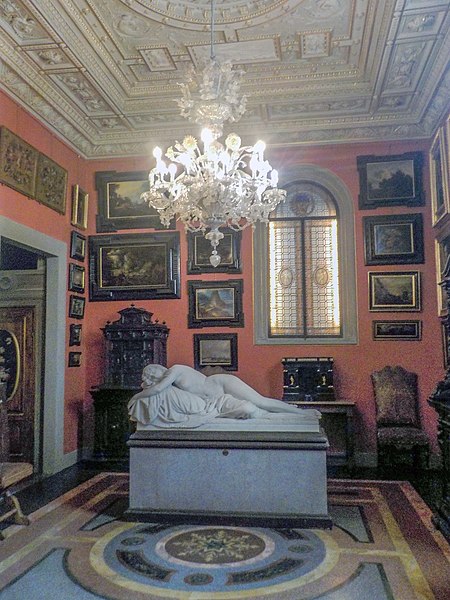
The Stibbert Museum may be found in Florence, Italy, on the way Frederick Stibbert at the top of the Montughi hill. Over 36,000 objects, such as an extensive collection of armor from both Eastern and Western cultures, may be found at the museum.
For the remainder of his life, Frederick Stibbert did not need to work because he had inherited his grandfather’s whole inheritance. Instead, he turned his mansion into a museum to showcase the things, antiques, and relics he had spent his life acquiring.
Stibbert commissioned the services of architect Giuseppe Poggi, painter Gaetano Bianchi, and sculptor Passaglia to construct additional space for the collections as the villa became inadequate.
Upon Stibbert’s death in 1906, his collection was donated to the city of Florence and made available to the general public. Cimitero Evangelico agli Allori in Florence is the final resting place for Stibbert and his loved ones.
All of his global collections are on display in the villa’s 57 rooms. Each room is jam-packed with priceless treasures and adorned with leather and tapestries covering most of the walls.
Every area features artwork, ranging from portraits and still lifes. Also included are pieces of Napoleon I of France’s actual clothing, as well as priceless pieces of furniture, porcelains, Tuscan crucifixes, Etruscan antiquities, and more.
9. Museo Leonardo Da Vinci
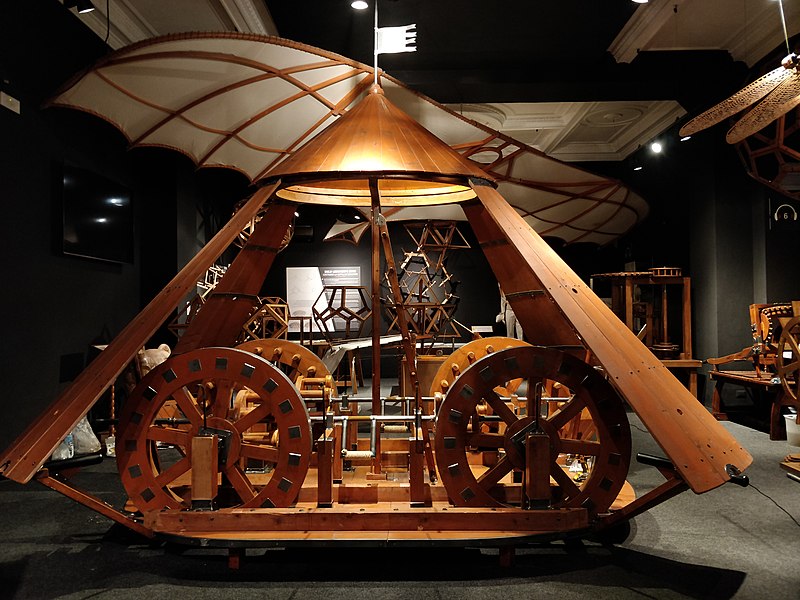
The Museo Leonardiano di Vinci, or the Leonardian Museum of Vinci, a museum devoted to the life and work of Leonardo da Vinci.
The museum has an extensive collection of replicas designed after sketches by Leonardo da Vinci.
There are over sixty models on display, each of which is accompanied with digital animations and interactive applications as well as accurate references to the artist’s designs and handwritten remarks.
The museum’s original home, the medieval Castello dei Conti Guidi, now houses the museum’s permanent exhibitions. The first rooms are located in the Palazzina Uzielli (Museo Ideale Leonardo da Vinci).
10. Museo Galileo
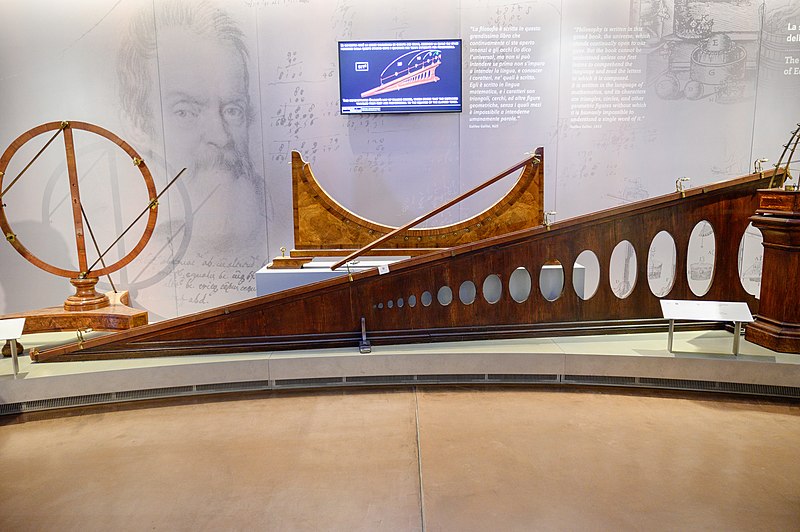
The Museo Galileo, formerly known as the Istituto e Museo di Storia della Scienza (Institute and Museum of the History of Science), is situated in Piazza dei Giudici, Florence, Italy, near the River Arno and the Uffizi Gallery.
The museum honors the life and work of astronomer and scientist Galileo Galilei, and is located in the historic Palazzo Castellani, formerly known as the Castello d’Altafronte, which dates back to the 11th century.
The importance that the Medici and Lorraine Grand Dukes placed on science and scientists is reflected in the fact that the Museo Galileo is home to one of the world’s largest collections of scientific instruments.
After being closed to the public for two years due to revamping and renovation work, the Museo di Storia della Scienza reopened on June 10, 2010 under the new name Museo Galileo.
It has been opened to the public 400 years after Galileo’s Sidereus Nuncius was first published in March 1610. (The Starry Messenger).

